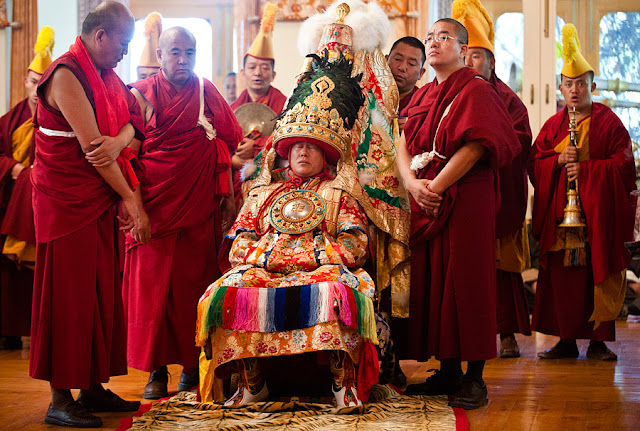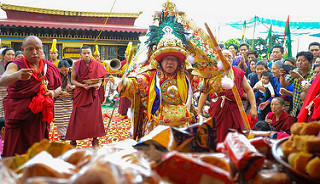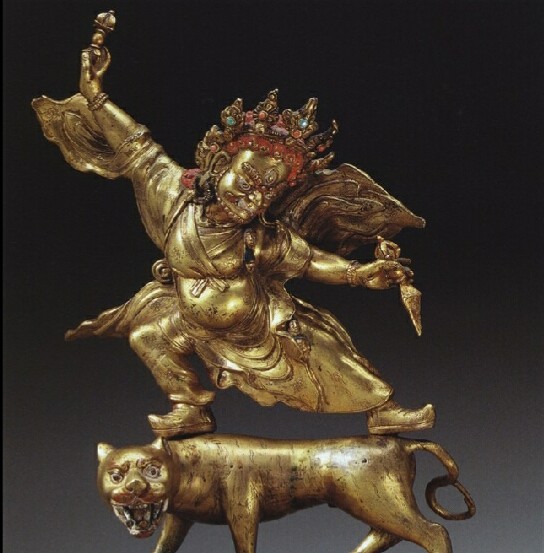If a man speaks or acts with a pure thought, happiness follows him like a shadow that never leaves him. --Dhammapada 1:1-2
Do not be ever thinking of yourself and forgetting that there are others; for you have no karma of your own, but the karma of each one is the karma of all. -- Echoes of the Orient 1:482
In fact, every religion presents this idea, but few people, apparently, understand or accept it. Granted, karma is a complicated subject and leaves many wondering: What exactly is karma, and how does it work? Can, or should, we seek to escape "bad karmic situations"? And why has karma being called the Law of the Universe.
Indeed, one kind thought can open our nature to the blessings that may fan out to benefit thousands. One unkind thought can attract that not only poisons our system, but spreads to others liable to be afflicted to. Still, another thought can affect the behavior of hundreds, bringing them back time and again to the fields of their plantings.
Some think that karma is administered by almighty God who rewards the good and punishes evildoers. In reality, each individual makes his own karma: we are our karma. We reward and punish ourselves: every incident and situation we find ourselves in is the result of causes we generated in the past. Daily we observe how loving thoughts and deeds make us happy and healthy; mean and selfish thoughts and deeds sicken and depress us and those around us, turning them from us in anger or fear.
As it's said in Guru Rinpoche Puja, living beings and their environments are filled with unbelievable problems and sufferings, coming one after another like rainfall, sufferings that are the results of negative karma.
Many questions raised and asked for a thousand times when one has met adverse or hostile conditions and :-
[1] I have practiced with my devotion faithfully, Why ?
[2] I had prayed every day, Why ?
[3] I have chanted a thousand and a thousand of mantra daily,Why ?
[4] I am a vegetarian and practicing compassion and loving kindness, Why ?
[5] I do charity works and being a charitable person, Why ?
[6] I am suffering a serious illness, Why ?
[7] Is my practise gone wild, Why ?
[8] Buddha or Bodhisattva not responding to my prayers, Why?
Give up hope and lose my faith and religion completely and negative thoughts are powerful to destroy our faith and will always remind you to give up your faiths . Your fears of practise, the more you practise ,and more hostile obstacles will chase after you!
So you may think to stay away from the spiritual path or Dharma activities, because you are afraid of your negative karma will be ripen and causing you to have many adverse obstacles, bad luck, sufferings or deadly illnesses. It means, we do not understand what Dharma is, you can think, "I'm exhausted so much of my negative karma now that I've accumulated throughout countless of my past lives.".
It's just like the weathers, the four seasons of Spring, Summer, Fall and Winter will arrive naturally whether you like it or not. So whether you are practicing Dharma or not , our good and negative karma will be knocking our door naturally.
For example, when you wash a dirty piece of cloth, the water becomes black with dirt. You don't see the black dirt as a negative thing since it means the cloth is getting clean. Rejoice! You should feel great joy about finishing the karma instead of seeing the negative and obstacles are something bad.
In the same way, when we practice Dharma, our negative karma can be ripen causing you to get sick or unwell or obstacles, because you're purifying so much negative karma by practicing Dharma. So you should rejoice when you are having difficulties in life.
"Please grant me blessings to see my obstacles as exhausting the results of my negative karmic imprints, and bless me always transform bad conditions into the path to enlightenment."
Thank you for reading, may you find peace and great bliss. With your support it helps to spread the Buddha’s precious teachings and turning the Dharma wheels in the world.
Aspiration For Bodhichitta
For those in whom the precious Bodhichitta has not arisen
May it arise and not decrease
But increase further and further.
Dedication of Merit
By this merit may we obtain omniscience then.
Having defeated the enemies wrong-doings.
May we liberate migratory from the ocean of existence.
With its stormy waves of birth, old age, sickness and death.
Note
I do not own or violated any infringement of copyright of these pictures, Pictures courtesy and credit to the rightful owners.









































